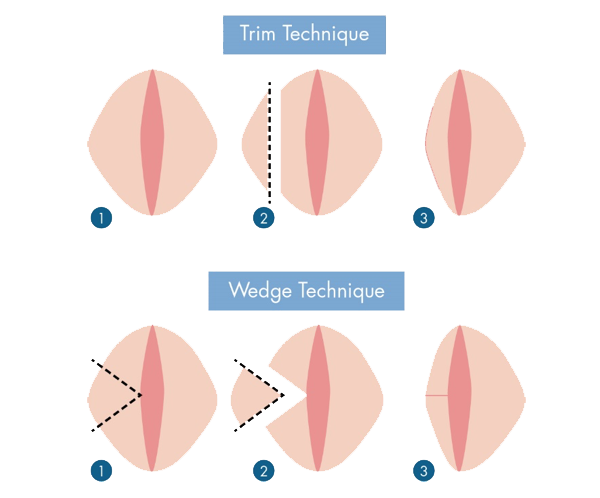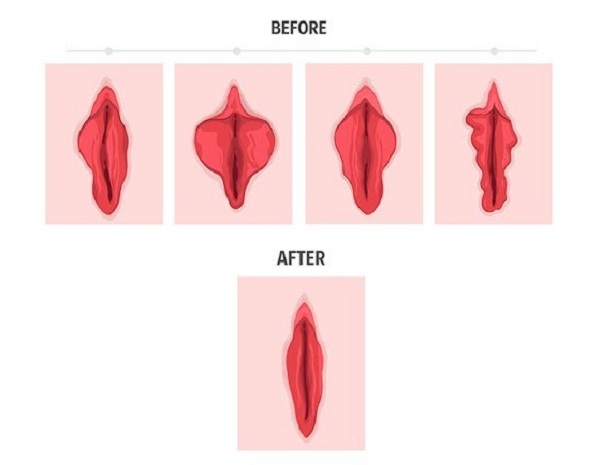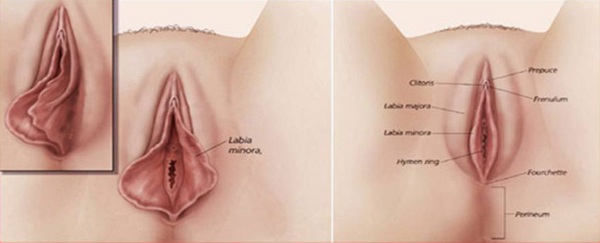Labiaplasty
What Is Labiaplasty Surgery
Labiaplasty, or vulval surgery, is a surgical procedure that aims to reduce the size or correct the shape of the labia minora and majora. It is the most popular vaginal surgery and is in high demand. It’s also sometimes referred to as “designer vagina” surgery.
Why Have a Labiaplasty
Labia size and shape is as individual as eye color, and the range of what’s “normal” is wide and deep. However, when a woman’s labia are especially elongated, the excess tissue can cause discomfort or get in the way of normal function. An athlete whose labia is long may find that the tissue sticks to her leg during physical activity, for example. Labial tissue that protrudes can make sitting on a bicycle seat uncomfortable.
And yes, there are women who decide to have a labiaplasty for aesthetic reasons, but they’re rarely influenced by some supposed beauty norms. Some who view their inner labia as abnormally long may feel self-conscious about the outward appearance of their genitalia, causing them emotional or psychological distress during sex or while wearing a thong or swimsuit. The labia can be obvious in tight-fitting yoga pants as well.
What to Expect From Surgery
To do a labiaplasty, a surgeon simply trims the excess tissue to allow the lips of the labia minora to sit tucked neatly within the labia majora—the outer lips of the vulva. It can be done under local or general anesthesia and recovery typically is swift and uncomplicated. Pain medication is usually required afterward, but only for a few days. For most women, recovery is swift and uncomplicated.
We recommend taking a week off from work to relax and heal from labiaplasty, wearing loose, comfortable pants, and a mini-pad to absorb minor bleeding. If you have this procedure, your doctor also may instruct you not to use tampons during your first period afterward. Within a month you should be back to your normal activities.
Questions? We got Answers!
Our surgeons emphasise that there is no “normal” and “abnormal” when it comes to the shape and size of female genitals. Every individual is unique and has their own shape. Thus, there is a great deal of difference in the appearance of normal female genitalia. There are many variations in the size and shape of a woman’s labia. Therefore, it is important that you do not compare yourself to images of other women.
Some women are born with labia that are enlarged or a bit misshapen. However, other women may find that childbirth, pregnancy, ageing and hormones can also affect the shape and size of the labia.
Smoking greatly increases the risk of complications occurring during and after your operation. It results in slow wound healing and an increase in the rate of infections. Therefore, almost all surgeons suggest that all patients are smoke and nicotine free for at least six weeks before and after surgery.
Furthermore, drinking alcohol, being overweight and taking drugs for medical or other reasons, also increase the risk of complication. Because of this, you should try and make sure you are as healthy as possible before opting for surgery.
Sometimes the inner labia are longer than the outer labia, sometimes the outer are longer than the inner. Sometimes they’re symmetrical, sometimes they’re shaped in a way that the clitoris is visible, other times not, and so forth.
A labiaplasty can be performed if or when someone’s labia are too long. Or when someone thinks their labia are too long.
There are two main types of procedures to address the labia minora: edge resection and wedge resection. Both of which are usually done under anesthesia.
Edge resection involves trimming the “excess” protruding edges of the labia, the way you’d trim your hair during a haircut, for instance.
Wedge resection maintains the original labial edges by cutting wedge-shaped slivers of skin out of the center of the labia minora, bringing the remaining skin together with dissolvable sutures.
Procedures to address the labia majora typically go one of two ways:
- cutting out tissue or using liposuction on labia that are longer or fuller than desired
- injecting fat or other filler material to plump labia that aren’t as full as desired




